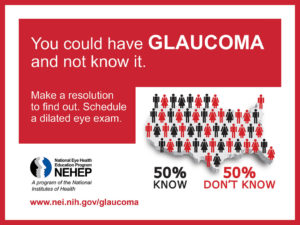Glaucoma Awareness – Early Testing and Detection
 Glaucoma has no symptoms and therefore it is often referred to as the sneak thief of sight. Patients with glaucoma experience no symptoms until the very late stages of the condition. Late stage glaucoma is characterized by profound vision loss.
Glaucoma has no symptoms and therefore it is often referred to as the sneak thief of sight. Patients with glaucoma experience no symptoms until the very late stages of the condition. Late stage glaucoma is characterized by profound vision loss.
Glaucoma Prevention
I am often asked by patients “I have a positive family history. How can I prevent myself from getting glaucoma?” The answer is early detection. We do this by being properly screened during your eye exam.
During your eye exam take advantage of the Comprehensive Digital Retinal Exam technology which allows us to take high-resolution panoramic and ultrasound images of the eye. These technologies combine hundreds of high-resolution images giving us a 3-dimensional view of the optic nerve. Some retinal nerve cells are more sensitive to glaucomatous changes than normal retinal cells. These retinal cells are called ganglion cells and when it comes to glaucoma they are kind of like the canaries in the coal mine. Ganglion cells are usually the first to signal early glaucomatous changes.
Yearly Eye Exams Reduce Blindness
By having yearly eye exams and comparing these digital images over the coming years, we look for subtle changes. Eye doctors usually diagnose glaucoma by noticing these subtle changes in the optic nerve over time.
Learning More
- There are two theories on glaucomatous vision loss, the vascular theory and mechanical theory.
- Some relatively new research also makes a compelling case that glaucomatous changes originate in the brain.
- Take the Glaucoma Eye-Q Test
Early Detection
 If you would like to start the new year off right we would be happy to asses your glaucoma risk factors at your next eye exam. Please call our Colleyville office at 817.416.0333 or the Keller office at 817.431.4900. You can also schedule your appointment online at any time.
If you would like to start the new year off right we would be happy to asses your glaucoma risk factors at your next eye exam. Please call our Colleyville office at 817.416.0333 or the Keller office at 817.431.4900. You can also schedule your appointment online at any time.





